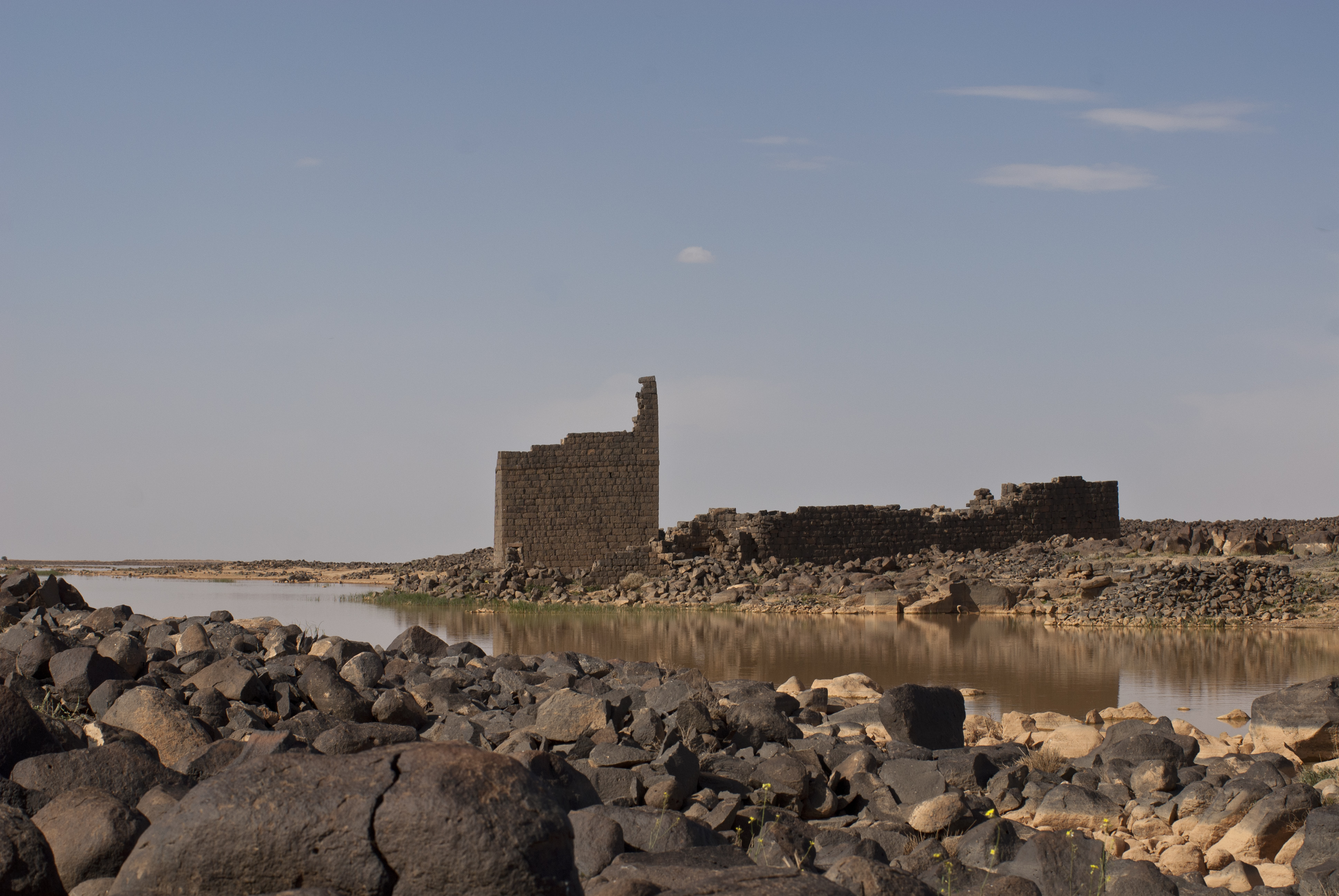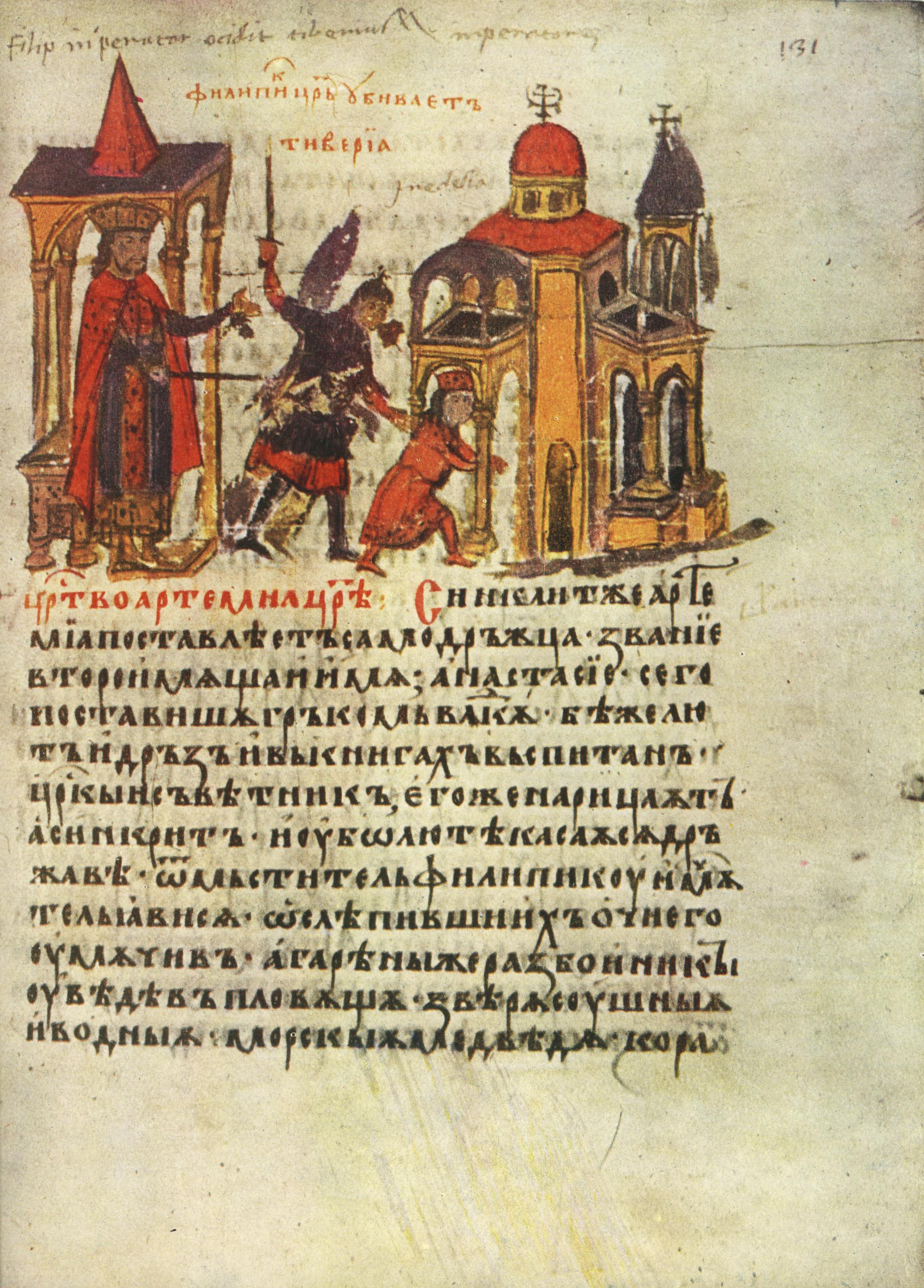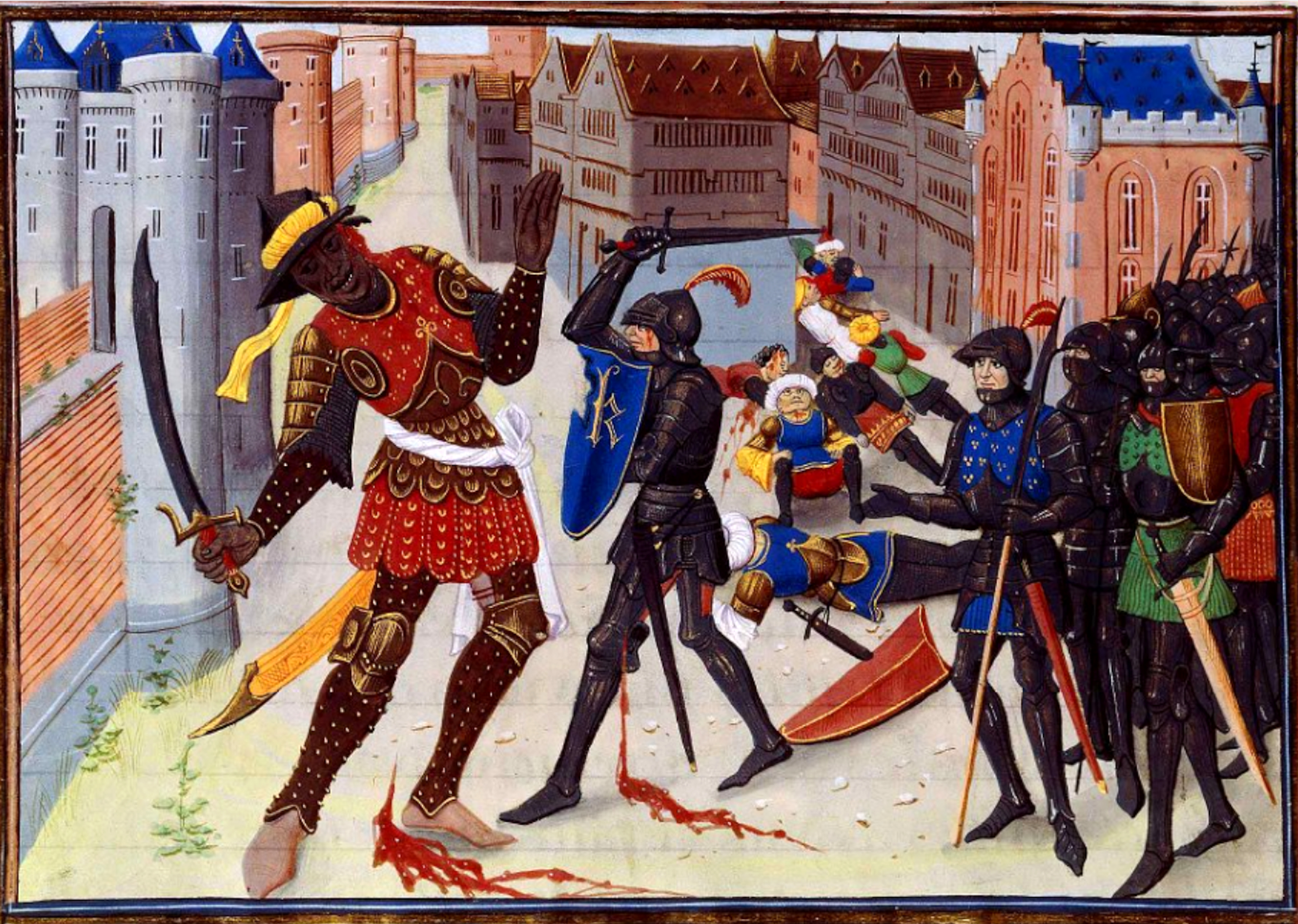|
Leo III The Isaurian
Leo III the Isaurian (; 685 – 18 June 741), also known as the Syrian, was the first List of Byzantine emperors, Byzantine emperor of the Isaurian dynasty from 717 until his death in 741. He put an end to the Twenty Years' Anarchy, a period of great instability in the Byzantine Empire between 695 and 717, marked by the rapid succession of several emperors to the throne, along with ending the continual defeats and territorial losses the Byzantines had suffered during the 7th century. He also successfully defended the Empire against the invading Umayyads and Byzantine Iconoclasm, forbade the veneration of icons. Early life Leo III was born in Germanikeia, Commagene, which is in modern Kahramanmaraş in Turkey. His original name was Konon (). Leo’s native tongue was Syriac language, Syriac or Arabic and he was described by Theophanes the Confessor as "the Saracen-minded," although there is very little evidence that he was directly influenced by Islam. After the victory of Ju ... [...More Info...] [...Related Items...] OR: [Wikipedia] [Google] [Baidu] |
Solidus (coin)
The ''solidus'' (Latin 'solid'; : ''solidi'') or ''nomisma'' () was a highly pure gold coin issued in the Later Roman Empire and Byzantine Empire. It was introduced in the early 4th century, replacing the aureus, and its weight of about 4.45 grams remained relatively constant for seven centuries. In the Byzantine Empire, the solidus or nomisma remained a highly pure gold coin until the 11th century, when several Byzantine emperors began to strike the coin with debasement, less and less gold. The nomisma was finally abolished by Alexios I Komnenos in 1092, who replaced it with the hyperpyron, which also came to be known as a "bezant". The Byzantine solidus also inspired the zolotnik in the Kievan Rus' and the originally slightly less pure gold dinar first issued by the Umayyad Caliphate beginning in 697. In Western Europe, the solidus was the main gold coin of commerce from late Roman times to the Early Middle Ages. In Late Antiquity and the Middle Ages, the solidus also ... [...More Info...] [...Related Items...] OR: [Wikipedia] [Google] [Baidu] |
Commagene
Commagene () was an ancient Greco-Iranian kingdom ruled by a Hellenized branch of the Orontid dynasty, Orontids, a dynasty of Iranian peoples, Iranian origin, that had ruled over the Satrapy of Armenia. The kingdom was located in and around the ancient city of Samosata, which served as its capital. The Iron Age name of Samosata, Kummuh, probably gives its name to Commagene. Commagene has been characterized as a "buffer state" between Armenia, Parthia, Syria, and Rome; culturally, it was correspondingly mixed. The kings of the Kingdom of Commagene claimed descent from Orontes I, Orontes with Darius I of Persia as their ancestor, by his marriage to Rhodogune, daughter of Artaxerxes II who had a family descent from king Darius I. The territory of Commagene corresponded roughly to the modern Turkish provinces of Adıyaman Province, Adıyaman and northern Gaziantep Province, Antep. Little is known of the region of Commagene before the beginning of the 2nd century BC. However, it se ... [...More Info...] [...Related Items...] OR: [Wikipedia] [Google] [Baidu] |
Tsebelda Fortress
Tsebelda fortress is a Late Antique/Early Medieval fortification near the village of Tsebelda, in the eponymous valley, in Abkhazia, Georgia. History The Tsebelda fortress is an architectural complex consisting of ruined towers, Christian chapels, a palace, necropolis, and several other structures. It is erected on two cliffs more than 400 m high above the Kodori river gorge. The extant structures at Tsebelda are identified with the ''Tsibilium''/''Tzibile'' of the Classical authors, such as Procopius of Caesarea. It appears to have been a chief fortress in Apsilia, a vassal principality of the Lazic kingdom in the 6th century. The fortress dominated the confluence of three major routes from the northern Eurasian steppe on their way to the Black Sea. Around 550, during the Lazic War, the Laz notable Terdetes betrayed his king Gubazes and handed the fortress of Tzibile over to the Persians. The Apsilians retook the fort, but refused to accept Lazic rule until persuaded to do ... [...More Info...] [...Related Items...] OR: [Wikipedia] [Google] [Baidu] |
Snowshoes
Snowshoes are specialized outdoor gear for walking over snow. Their large footprint spreads the user's weight out and allows them to travel largely on top of rather than through snow. Adjustable bindings attach them to appropriate winter footwear. Traditional snowshoes have a hardwood frame filled in with rawhide latticework. Modern snowshoes are made of lightweight metal, plastic, and other synthetic materials. In the past, snowshoes were essential equipment for anyone dependent on travel in deep and frequent snowfall, such as fur trappers. They retain that role in areas where motorized vehicles cannot reach or are inconvenient to use. However, their greatest contemporary use is for recreation. Snowshoeing is easy to learn and in appropriate conditions is a relatively safe and inexpensive recreational activity. However, doing so in icy, steep terrain requires both advanced skill and mountaineering-style pivoting-crampon snowshoes. Development Origins Before people built ... [...More Info...] [...Related Items...] OR: [Wikipedia] [Google] [Baidu] |
Al-Walid I
Al-Walid ibn Abd al-Malik ibn Marwan (; – 23 February 715), commonly known as al-Walid I (), was the sixth Umayyad caliph, ruling from October 705 until his death in 715. He was the eldest son of his predecessor, Caliph Abd al-Malik (). As a prince, he led annual raids against the Byzantines from 695 to 698 and built or restored fortifications along the Syrian Desert route to Mecca. He became heir apparent in , after the death of the designated successor, Abd al-Malik's brother Abd al-Aziz ibn Marwan. Under al-Walid, his father's efforts to centralize government, impose a more Arabic and Islamic character on the state, and expand its borders were continued. He heavily depended on al-Hajjaj ibn Yusuf, his father's powerful viceroy over the eastern half of the caliphate. During his reign, armies commissioned by al-Hajjaj conquered Sind and Transoxiana in the east, while the troops of Musa ibn Nusayr, the governor of Ifriqiya, conquered the Maghreb and Hispania in the w ... [...More Info...] [...Related Items...] OR: [Wikipedia] [Google] [Baidu] |
Caliphate
A caliphate ( ) is an institution or public office under the leadership of an Islamic steward with Khalifa, the title of caliph (; , ), a person considered a political–religious successor to the Islamic prophet Muhammad and a leader of the entire Muslim world (''ummah''). Historically, the caliphates were polities based on Islam which developed into multi-ethnic trans-national empires. During the medieval period, three major caliphates succeeded each other: the Rashidun Caliphate (632–661), the Umayyad Caliphate (661–750), and the Abbasid Caliphate (750–1517). In the fourth major caliphate, the Ottoman Caliphate, the rulers of the Ottoman Empire claimed caliphal authority from 1517 until the Ottoman caliphate was Abolition of the Caliphate, formally abolished as part of the Atatürk's reforms, 1924 secularisation of Turkey. An attempt to preserve the title was tried, with the Sharifian Caliphate, but this caliphate fell quickly after its conquest by the Sultanate o ... [...More Info...] [...Related Items...] OR: [Wikipedia] [Google] [Baidu] |
Lazica
The Kingdom of Lazica (; ; ), sometimes called Lazian Empire, was a state in the territory of west Georgia in the Roman era, Georgia in the Roman period, from about the 1st century BC. Created as a result of the collapse of the kingdom of Colchis and the gaining of independence by the tribal-territorial units included in it in 131 AD. Name In the Svan language, the Svans refer to the Mingrelia (Samegrelo) region as Lazan, La- is the Svan territorial prefix and Lazan means "the land of the Zans". History By the mid-3rd century, Lazica was given partial autonomy within the Roman Empire and developed into a kingdom. Throughout much of its existence, it was mainly a Byzantine Empire, Byzantine strategic vassal kingdom that briefly came under Sasanian Empire, Sasanian Persian rule during the Lazic War. The treaty that ended the war abolished the kingdom of Lazica which became a Byzantine territory rules by a patrician. The parts of the Lazian Empire were Suani, Scymni, Western ... [...More Info...] [...Related Items...] OR: [Wikipedia] [Google] [Baidu] |
Alania
Alania was a medieval kingdom of the Iranian Alans ( Proto-Ossetians) that flourished between the 9th–13th centuries in the Northern Caucasus, roughly in the location of the latter-day Circassia, Chechnya, Ingushetia, and modern North Ossetia–Alania. With its capital at Maghas, the location of which is still disputed, it became independent from the Khazars in the late 9th century. It was Christianized by a Byzantine missionary soon after, in the early 10th century. Reaching its peak in the 11th century, under the rule of King Durgulel, it profited from controlling a vital trade route through the Darial Pass. It maintained close relations not only with the Byzantine Empire but also the Kingdom of Georgia, as well as the small Dagestani kingdom of Sarir; the first two also employed Alan mercenaries, who were infamous horsemen. It was responsible for spreading Orthodox Christianity among neighbouring pagan peoples such as the Circassians and Vainakhs. The kingdom eventuall ... [...More Info...] [...Related Items...] OR: [Wikipedia] [Google] [Baidu] |
Justinian II
Justinian II (; ; 668/69 – 4 November 711), nicknamed "the Slit-Nosed" (), was the last Byzantine emperor of the Heraclian dynasty, reigning from 685 to 695 and again from 705 to 711. Like his namesake, Justinian I, Justinian II was an ambitious and passionate ruler who was keen to restore the Roman Empire to its former glories. However, he responded brutally to any opposition to his will and lacked the finesse of his father, Constantine IV. Consequently, he generated enormous opposition to his reign, resulting in his deposition in 695 in a popular uprising. He only returned to the throne in 705 with the help of a Bulgar and Slav army. His second reign was even more despotic than the first, and in 711 he was killed by mutinous soldiers. First reign Justinian II was the eldest son of Emperor Constantine IV and Anastasia. His father appointed him as his heir sometime after October 682, upon the deposition of his uncles Heraclius and Tiberius. In 685, at the age of sixteen, J ... [...More Info...] [...Related Items...] OR: [Wikipedia] [Google] [Baidu] |
Islam
Islam is an Abrahamic religions, Abrahamic monotheistic religion based on the Quran, and the teachings of Muhammad. Adherents of Islam are called Muslims, who are estimated to number Islam by country, 2 billion worldwide and are the world's Major religious groups, second-largest religious population after Christians. Muslims believe that Islam is the complete and universal version of a Fitra, primordial faith that was revealed many times through earlier Prophets and messengers in Islam, prophets and messengers, including Adam in Islam, Adam, Noah in Islam, Noah, Abraham in Islam, Abraham, Moses in Islam, Moses, and Jesus in Islam, Jesus. Muslims consider the Quran to be the verbatim word of God in Islam, God and the unaltered, final revelation. Alongside the Quran, Muslims also believe in previous Islamic holy books, revelations, such as the Torah in Islam, Tawrat (the Torah), the Zabur (Psalms), and the Gospel in Islam, Injil (Gospel). They believe that Muhammad in Islam ... [...More Info...] [...Related Items...] OR: [Wikipedia] [Google] [Baidu] |
Saracen
upright 1.5, Late 15th-century German woodcut depicting Saracens ''Saracen'' ( ) was a term used both in Greek and Latin writings between the 5th and 15th centuries to refer to the people who lived in and near what was designated by the Romans as Arabia Petraea and Arabia Deserta. The term's meaning evolved during its history of usage. During the Early Middle Ages, the term came to be associated with the tribes of Arabia. The oldest known source mentioning "Saracens" in relation to Islam dates back to the 7th century, in the Greek-language Christian tract '' Doctrina Jacobi''. Among other major events, the tract discusses the Muslim conquest of the Levant, which occurred after the rise of the Rashidun Caliphate following the death of the Islamic prophet Muhammad. The Roman Catholic Church and European Christian leaders used the term during the Middle Ages to refer to Muslims. By the 12th century, "Saracen" developed various overlapping definitions, generally conflatin ... [...More Info...] [...Related Items...] OR: [Wikipedia] [Google] [Baidu] |
Theophanes The Confessor
Theophanes the Confessor (; 759 – 817 or 818) was a member of the Byzantine aristocracy who became a monk and chronicler. He served in the court of Emperor Leo IV the Khazar before taking up the religious life. Theophanes attended the Second Council of Nicaea in 787 and resisted the iconoclasm of Leo V the Armenian, for which he was imprisoned. He died shortly after his release. Theophanes the Confessor, venerated on 12 March in both the Eastern Orthodox Church and the Roman Catholic Church, should not be confused with Theophanes of Nicaea, whose feast is commemorated on 11 October. Biography Theophanes was born in Constantinople of wealthy and noble iconodule parents: Isaac, governor of the islands of the Aegean Sea, and Theodora, of whose family nothing is known. His father died when Theophanes was three years old, and the Byzantine Emperor Constantine V (740–775) subsequently saw to the boy's education and upbringing at the imperial court. Theophanes would hold several ... [...More Info...] [...Related Items...] OR: [Wikipedia] [Google] [Baidu] |








